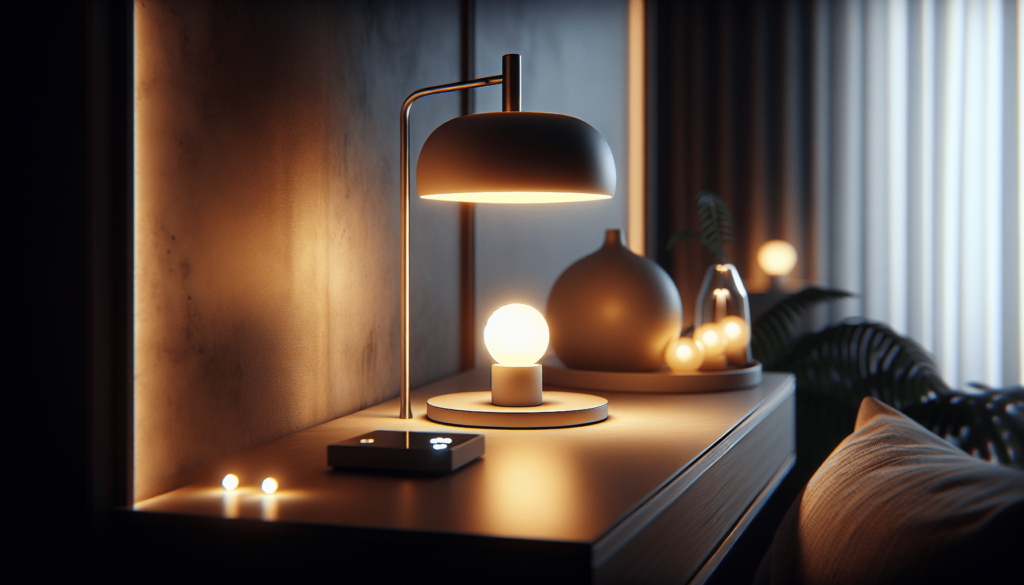Imagine creating a sanctuary in your bedroom where a perfect blend of lighting sets the mood for relaxation and tranquility. In this article, discover five expert tips on how to create the perfect bedroom lighting. From choosing the right light fixtures to understanding the importance of layering, these simple yet effective tips will help you transform your bedroom into a cozy and inviting space that you’ll love coming home to. So, let’s shed some light on how to create the perfect ambiance for restful nights and peaceful mornings.
1. Determine the Purpose of the Lighting
When designing the lighting for your bedroom, it’s important to first determine the purpose of the lighting. Consider the activities that will take place in your bedroom and identify the different lighting needs for each activity.
For example, if you enjoy reading in bed, you’ll need task lighting that provides focused illumination. If you use your bedroom as a workspace, you’ll need a combination of general lighting and task lighting to ensure proper visibility. Understanding the activities that will take place in your bedroom will help you determine how to best meet your lighting needs.
2. Balance Natural and Artificial Light
Maximizing natural light during the day is not only energy-efficient but can also enhance the overall ambiance of your bedroom. Consider the placement of windows in your room and make sure to keep them unobstructed for optimal natural lighting.
However, it’s also important to have control over the amount of natural light entering your bedroom, especially during times when you need privacy or when the sunlight is too harsh. Installing curtains or blinds allows you to easily adjust the amount of natural light and maintain a comfortable environment.
In addition to natural light, it’s crucial to have artificial lighting sources for nighttime use. This ensures that you have adequate illumination after the sun sets and helps create a cozy and inviting atmosphere in your bedroom.

3. Choose the Right Lighting Fixtures
Selecting the right lighting fixtures plays a pivotal role in creating the perfect bedroom lighting. Consider the size and style of your bedroom when choosing fixtures to ensure they complement the overall aesthetics of the space.
To achieve a well-balanced and functional lighting scheme, it’s essential to incorporate a combination of general, task, and accent lighting. General lighting, such as overhead fixtures or recessed lighting, provides overall illumination to the entire room. Task lighting, on the other hand, focuses on specific functional areas like bedside tables or desks. Lastly, accent lighting is used to highlight certain features or create a particular mood.
Installing dimmers for your lighting fixtures is another important consideration. Dimmers allow you to adjust the lighting intensity according to your needs and create a more versatile and customizable lighting design.
4. Create Layers of Light
To achieve an ideal bedroom lighting setup, it’s essential to create layers of light using a variety of lighting sources. The goal is to have a combination of different types of lighting at different heights to achieve a balanced, cozy, and functional space.
Start by combining overhead lighting with lamps and wall sconces. The overhead lighting provides general illumination, while lamps and wall sconces offer softer, more intimate lighting. This combination creates a layered effect that adds depth and dimension to your bedroom.
Additionally, consider placing task lights near areas where you need focused illumination. This could be beside your bed for reading or on a desk for working. By strategically placing task lights, you ensure that you have proper lighting for specific activities within your bedroom.

5. Pay Attention to Lighting Placement
When it comes to bedroom lighting, it’s important to pay attention to the placement of your lights to ensure an even distribution of light throughout the room. This helps create a well-lit and comfortable environment.
Avoid placing lights directly above the bed as it can create shadows and cause discomfort while sleeping. Instead, position lights strategically around the room to avoid shadows and glare. This can be achieved by placing lights on either side of the bed or using wall sconces to create a softer and more evenly distributed light.
By considering the placement of your lights, you can create a balanced and inviting atmosphere in your bedroom.
6. Consider Color Temperature and Bulb Options
Choosing the right color temperature and bulb options is crucial in creating the desired ambiance in your bedroom. Color temperature refers to the warmth or coolness of the light emitted by the bulb.
For a cozy and relaxing ambiance, opt for bulbs with warm color temperatures. These emit a soft and inviting light that adds warmth to your bedroom. Experiment with different bulb types, such as incandescent or LED, to find the perfect balance of warmth and efficiency.
When it comes to nighttime lighting, it’s best to avoid using bright white or cool-toned bulbs. These can disrupt your sleep patterns and make it difficult to relax before bed. Opt for softer, warmer lighting options to create a calm and soothing environment.

7. Utilize Lighting Controls and Smart Home Technology
Incorporating lighting controls and smart home technology into your bedroom lighting design can greatly enhance convenience and functionality. Installing dimmer switches provides you with the flexibility to adjust the lighting intensity according to your needs and moods.
Consider using timers or motion sensors to automate your bedroom lighting. Timers can be set to turn the lights on or off at specific times, mimicking a natural lighting pattern and aiding in your sleep routine. Motion sensors can automatically turn the lights on when you enter the room, providing a convenient and hands-free lighting solution.
Additionally, explore smart home systems that allow remote control of your bedroom lights. This enables you to adjust the lighting settings from the comfort of your bed or even when you’re away from home.
8. Consider Energy Efficiency
When designing your bedroom lighting, it’s important to consider energy efficiency. This not only helps reduce your carbon footprint but can also lead to long-term cost savings.
Opt for LED bulbs, as they are highly energy-efficient and have a longer lifespan compared to traditional incandescent bulbs. LED bulbs consume less electricity and produce less heat, making them an eco-friendly choice for your bedroom lighting.
Look for lighting fixtures with ENERGY STAR certification. These fixtures have been tested and proven to meet strict energy efficiency guidelines, ensuring that they consume less energy while providing optimal illumination.
Remember to turn off unnecessary lights when not in use to further conserve energy and reduce electricity consumption.

9. Layer Lighting for Different Moods
To create a versatile and inviting atmosphere in your bedroom, consider layering your lighting to accommodate different moods and activities.
For a relaxing ambiance, incorporate soft, dim lighting. This can be achieved through the use of bedside lamps or wall sconces with low-wattage bulbs. This soft and warm lighting creates a cozy and soothing environment, perfect for unwinding before bed.
When you need brighter lighting for activities like reading or working in bed, add additional sources of light that provide more focused illumination. This can be in the form of adjustable reading lamps or adjustable fixtures that allow you to direct the light where you need it most.
To set a romantic mood, experiment with colored bulbs or adjustable lighting that allows you to change the color temperature. This can create a warm and intimate setting, perfect for a romantic evening in the comfort of your own bedroom.
10. Personalize Your Lighting Design
Lastly, don’t forget to personalize your bedroom lighting design to reflect your personal taste and style preferences. Consider the overall aesthetics of your bedroom and incorporate lighting fixtures and elements that enhance the visual appeal.
Add decorative lighting elements such as chandeliers or pendant lights to make a statement and create a focal point in your bedroom. These decorative fixtures can add a touch of elegance and style to your space.
Experiment with different lighting arrangements to find the perfect setup that suits your needs and preferences. Lighting is a powerful tool in creating the desired mood and atmosphere in your bedroom, so don’t be afraid to get creative and make it your own.
By following these tips and considering the purpose, balance, fixtures, layers, placement, color temperature, controls, energy efficiency, moods, and personalization, you can create the perfect lighting design for your bedroom. Enjoy a well-lit, comfortable, and visually appealing space that enhances your overall experience and relaxation in your personal sanctuary.



